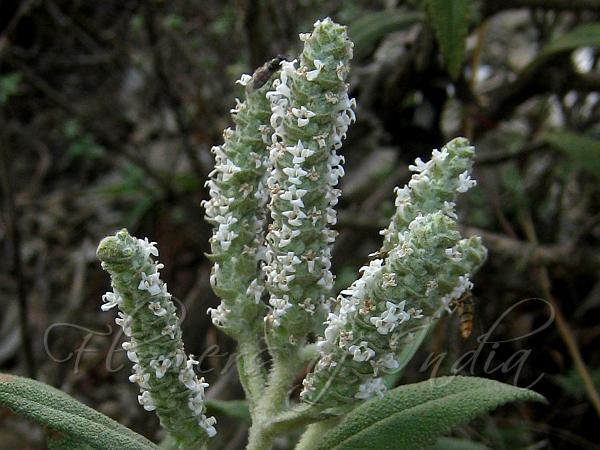|
| Cone-Bearing Sage |
|

|

| File size | 434467 |
| Original date | 4/9/12 10:05 AM |
| Resolution | 2112 x 1584 |
| Flash | Flash did not fire, auto |
| Focal length | 6.6mm |
| Exposure time | 1/640s |
| Aperture | 3.0 |
| Focus Distance | |
| Metering Mode | Multi-segment |
| Camera make | Canon |
| Camera model | Canon PowerShot A495 |
| Sensor type | OneChipColorArea |
|
|
|
|
Photo: |
Botanical name: Salvia strobilifera Family: Lamiaceae (Mint family)
Synonyms: Meriandra strobilifera
Synonyms: Meriandra strobilifera
Cone-Bearing Sage is a shrub with an aromatic,
camphor-like, smell. Stems are woody and leafless below, up to 1 m,
above leafy and with an covering of short dendroid hairs only. Leaves
are regularly ovate-oblong to elliptic, 5-11 x 1-3 cm,
thickish-textured, very finely toothed, wedge-shaped, rounded or
heart-shaped, pointed, somewhat wrinkled above. Hairy covering is
denser on the underside, whitish. Leaf-stalks are up to 1.2 cm.
Clusters of young leaves are sometimes present in axils. Inflorescence
is spike-like, of distinct, clearly separated or almost so,
whorled-clusters. Bracts are equal to or shorter than sepal-cup. Sepal
cup in flower is about 2-3 mm, in fruit to up to 7 mm, with a dense
covering of eglandular branched hairs. Upper lip nearly entire, lower
lip with 2, about1-15 mm lobes. Flowers are 6-7 mm, white or pale
lilac, with spreading petals. Flower-tube has a dense annulus. Stamens
are 2, protruding. Nutlets are about 1.8 x 1 mm, brown. Cone-Bearing
Sage is found on dry, rocky slopes of W. Himalayas, at altitudes of
1500-1800 m.
| Identification credit: Krishan Lal | Photographed in Sirmaur Distt, Himachal Pradesh. |
• Is this flower misidentified? If yes,